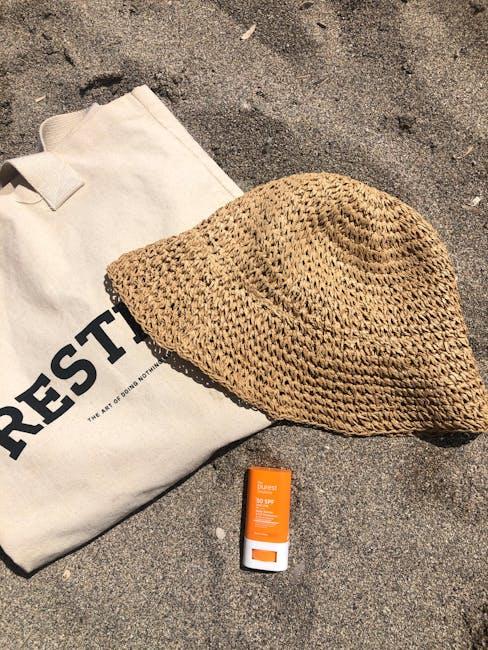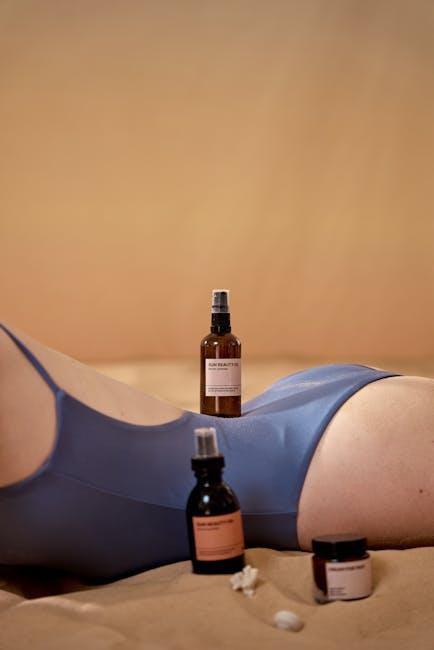Should Sunscreen Be Marketed as a Beauty or Health Product
In the vibrant intersection of beauty and health, few products straddle the line as gracefully as sunscreen. A staple in skincare routines around the globe, sunscreen serves as both a guardian against the sun’s relentless rays and a key player in the quest for radiant, youthful skin. Yet, as its popularity soars, a curious debate simmers beneath its smooth surface: should sunscreen be marketed primarily as a beauty enhancer or as a health necessity? This question invites us to explore the multifaceted roles sunscreen plays in our lives, challenging us to consider the motivations that drive its use and the implications of its marketing. In this article, we delve into the nuances of this debate, examining the perspectives of dermatologists, beauty experts, and consumers alike, to uncover where sunscreen truly belongs in the vast landscape of personal care products.
The Dual Identity of Sunscreen Exploring the Intersection of Beauty and Health
The role of sunscreen in our daily lives extends far beyond the simple act of shielding our skin from harmful UV rays. This product stands at a fascinating crossroads between beauty and health, challenging traditional marketing categories. On one hand, sunscreen is essential for maintaining skin health, preventing sunburns, and reducing the risk of skin cancer. On the other, it plays a crucial role in beauty routines, contributing to the preservation of youthful skin by preventing premature aging and sun-induced wrinkles.
In the realm of beauty, sunscreen is often marketed as a tool for achieving flawless skin, with formulations that promise not only protection but also cosmetic benefits like a matte finish or enhanced radiance. Conversely, from a health perspective, the emphasis is on its efficacy in blocking harmful UV rays and the potential to prevent serious skin conditions. This dual identity poses a unique marketing challenge and opportunity. Should sunscreen be adorned with luxurious packaging and fragrances to appeal to beauty enthusiasts, or should it remain straightforward and clinical to underscore its health benefits? The answer may lie in a balanced approach that embraces both aspects, ensuring that consumers recognize sunscreen as an indispensable part of both their beauty arsenal and their health regimen.
- Beauty Benefits: Prevents premature aging, enhances skin texture, offers a cosmetic finish.
- Health Benefits: Protects against UV radiation, reduces skin cancer risk, prevents sunburn.

Unveiling the Benefits How Sunscreen Protects More Than Just Skin
When we think of sunscreen, its primary role as a shield against sunburn often comes to mind. However, the benefits extend far beyond mere protection from UV rays. Sunscreen acts as a formidable ally in the fight against premature aging, helping to maintain the skin’s youthful elasticity and ward off wrinkles. By filtering out harmful ultraviolet light, it preserves the skin’s collagen and elastin, crucial components for maintaining firmness and smoothness.
Moreover, sunscreen serves as a silent guardian of our overall health. Regular use has been shown to significantly reduce the risk of skin cancers, including melanoma, which can be life-threatening. Additional benefits include:
- Preventing sun-induced skin discolorations and brown spots.
- Maintaining an even skin tone and texture.
- Providing a barrier against harmful pollutants and environmental aggressors.
By incorporating sunscreen into daily routines, individuals are not only investing in their skin’s beauty but also in their long-term health, making it a multifaceted product that transcends traditional beauty boundaries.

Marketing Strategies Decoding the Message Behind Sunscreen Labels
The packaging and marketing of sunscreen have long been a battleground for brands aiming to capture consumer attention. The labels often feature terms like “broad-spectrum,” “water-resistant,” and “SPF 50+”—but what do these words actually convey? At the heart of this marketing puzzle is whether sunscreen should be primarily positioned as a beauty product or a health essential. Beauty-focused marketing leans into the promise of flawless skin, often emphasizing attributes like “anti-aging” and “glow-enhancing.” These labels speak directly to the aesthetic desires of consumers, capitalizing on the pursuit of youthful, radiant skin. On the other hand, health-oriented messaging prioritizes protection, with a focus on preventing skin cancer and other sun-induced damage. This approach uses clinical language to underscore the importance of sun protection as a preventive health measure.
- Beauty-Driven Labels: Highlight anti-aging benefits, emphasize skin tone enhancement, often use aspirational imagery.
- Health-Focused Messaging: Stresses UV protection, highlights dermatologist recommendations, uses factual data.
Understanding these strategies is crucial for consumers to make informed decisions. The dichotomy between beauty and health is not merely a marketing ploy but a reflection of the diverse motivations behind sunscreen use. While the allure of beauty can be compelling, the underlying health benefits remain a critical factor that brands are increasingly weaving into their narratives. This dual focus not only broadens the appeal of sunscreen products but also enriches the consumer’s understanding of what they are truly investing in.

Guiding the Consumer Making Informed Choices in Sun Protection Products
In a world where the line between beauty and health continues to blur, how we market sunscreen can significantly influence consumer choices. Sunscreen serves as both a guardian against harmful UV rays and an enhancer of radiant skin. It is crucial to guide consumers towards informed choices by understanding its dual role. On one hand, sunscreen as a health product emphasizes its role in protecting against skin cancer and preventing premature aging. This approach appeals to the pragmatic consumer who prioritizes long-term well-being and safety.
On the other hand, sunscreen as a beauty product highlights its immediate benefits such as skin hydration, even complexion, and a smooth finish. This perspective targets individuals seeking aesthetic enhancements in their daily skincare routine. To effectively communicate these aspects, marketers can utilize strategies like:
- Storytelling: Share narratives of real-life experiences that resonate with both beauty enthusiasts and health-conscious individuals.
- Visual Campaigns: Use compelling imagery that showcases the dual benefits of sunscreen, capturing both protection and beauty.
- Informative Content: Provide educational resources that explain the science behind sunscreen’s protective qualities and its beautifying effects.
By presenting sunscreen in this dual light, consumers are empowered to make choices that align with both their health needs and beauty aspirations.
The Way Forward
As we bask under the sun’s generous glow, the debate over whether sunscreen should be marketed as a beauty or health product continues to cast its own shadow. On one hand, the allure of flawless, youthful skin makes a compelling case for its place on the beauty aisle. On the other, the undeniable shield it provides against the sun’s harmful rays underscores its vital role in our health and well-being. Perhaps the answer lies not in choosing sides but in embracing the dual nature of sunscreen—a guardian of our health and an ally in our beauty rituals. As consumers, we have the power to redefine its narrative, recognizing that beauty and health are not mutually exclusive but rather two sides of the same radiant coin. So, the next time you reach for that bottle, remember: whether you view it as a beauty essential or a health necessity, the true essence of sunscreen is in its ability to protect and enhance the skin you’re in.


